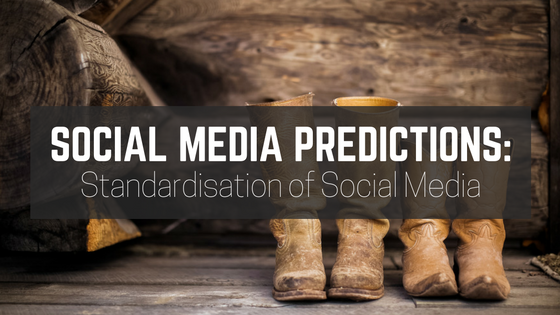
Social networks are trying harder than ever to offer what their rivals offer. Users are finding that whenever a new feature pops up somewhere, soon enough something inherently similar materialises on all of the others. So what’s the deal, guys? Are we moving towards standardised social media?
It’s around this time that a great deal of marketers come out of the woodwork and begin to lay down their predictions for next year’s social media trends. In the past this has often come in the guise of leaked features and forecasts on what new aspects each network will focus on developing in the coming months. But throughout 2016 social networks’ developmental priorities have changed in a way that is so glaringly obvious it has, for the large part, gone unnoticed.
What we’re seeing, whether as a momentary trend or a glimpse into the future of social networking, is the standardisation of social media sites. This has come in the guise of products that would have been considered a single network niche a few years ago, being slightly altered and assimilated by others. Here are a few of the most obvious examples:
- Facebook delivering trending topics in a way that is very reminiscent of the way that news is delivered on Twitter.
- Twitter expanding its character count to allow users to express more in posts reminiscent of those on Facebook.
- Snapchat introducing Memories, an update that took it fully out of it’s “disappearing content” niche and aligned it with Instagram’s more permanent capabilities.
- Instagram introducing Stories, and more recently ephemeral direct content, both features that are nigh-on the same as what originally made Snapchat popular.
- Facebook giving disappearing content a go for themselves in a test for Messenger.
- Facebook introducing Facebook Live little after Twitter assimilated Periscope into itself.
- Instagram hopping on the live content bandwagon with an ephemeral twist in its latest update.
Even YouTube has started to expand in this way by testing community features including the posting of text and visual content; which is what Facebook first did before it was suddenly able to do a whole other heap of things as well. YouTube is likely to cling tight to its position as prime video-sharing site above social network as we delve into 2017 – but it seems even they couldn’t resist the tide of casual thievery that has become all-too-common this year.
While as yet no one network has been totally honest with us about their updates (they’re still opting for “we’re expanding the way users can connect with one another” over “people seem to like this sort of feature on Snapchat so we thought we’d give it a try”), little has been more obvious to marketers throughout 2016.
The big four get physical
The sites that are stepping on each others toes here are the current forerunners in the world of social networking – Facebook, Instagram, Snapchat and Twitter. Each of these social media giants have, to varying degrees of success (sorry Twitter), invested this year into becoming the social network. For a while, everybody was content to believe that that was Facebook – and it certainly is at the moment – but the internet is a strange a wondrous place so who knows what could happen in the future if standardised social media really is where we are headed.
Let’s be clear here. There are reasons we haven’t seen Periscope throw on advanced business advertising tools or Reddit offer live streaming – the former because it is primarily an app with one capability, the latter because… well, because it’s Reddit and it does what it likes. These aren’t competing in the same way that the big four are – or, at least, they aren’t yet.
What is concerning is that the big four could be cultivating an aura of expectation within users for certain features. While it might not be immediate, there may well come a point when each new site has to conform to a conventional framework in order to be considered a viable network.
“But seriously, where should I post that?”
Standardised social media is looking increasingly inevitable – at least among the most popular networks. Branding, marketing and personal preference have become the primary reasons why users invest in one over another. With the expansion of features, when it comes to the question “where should I post that?” the answer is no longer simple. Really it comes down to where your audience is, where you are established, and where trends and discussions within your industry are common.
Obviously, certain types of content still lend themselves well to certain networks, as do certain outcomes. For example, if you’re looking for click-throughs then Instagram is still next to useless. But if you’re looking for reach and brand awareness, its influence can be enormous.
Is standardised social media becoming a reality? Tweet us your thoughts – @GiraffeSM.




